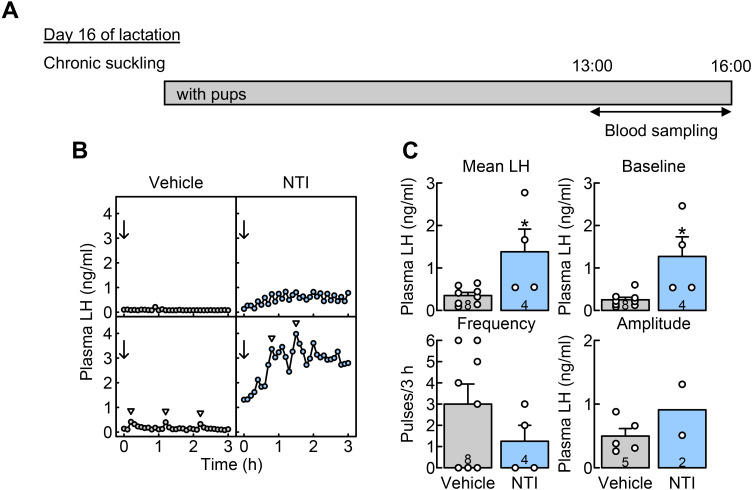Fig. 2.
Central administration of naltrindole (NTI), a selective δ opioid receptor (DOR) antagonist, blocked the suppression of luteinizing hormone (LH) secretion in OVX + E2 lactating rats with chronic suckling during late lactation. (A) Schematic illustration of experimental schedule: Blood samples were collected from free-moving conscious rats in the chronic suckling group (animals always housed with their pups throughout the experimental period) on day 16 of lactation. (B) Plasma LH profiles of representative OVX + E2 lactating rats that were administered with NTI or a vehicle on day 16 of lactation. Blood samples were collected every 6 min for 3 h. Immediately after the first blood collection, NTI or vehicle (arrows) was injected into the 3V. Arrowheads indicate the peaks of LH pulses identified by the PULSAR computer program. (C) The mean LH concentrations and the baseline of LH pulses were significantly higher in NTI-injected rats than in vehicle-injected control rats on day 16 of lactation (*, P < 0.05, Student’s t-test). No significant difference was observed in the frequency of LH pulses between the groups. Statistical analysis did not apply to the amplitude of LH pulses because of the small sample size. LH pulses were detected in two of four NTI-injected rats and five of eight vehicle-injected control rats. Values in bar charts are means ± SEMs or means. Open circles on the bar chart indicate the individual values. The number in each column indicates the number of animals used.

